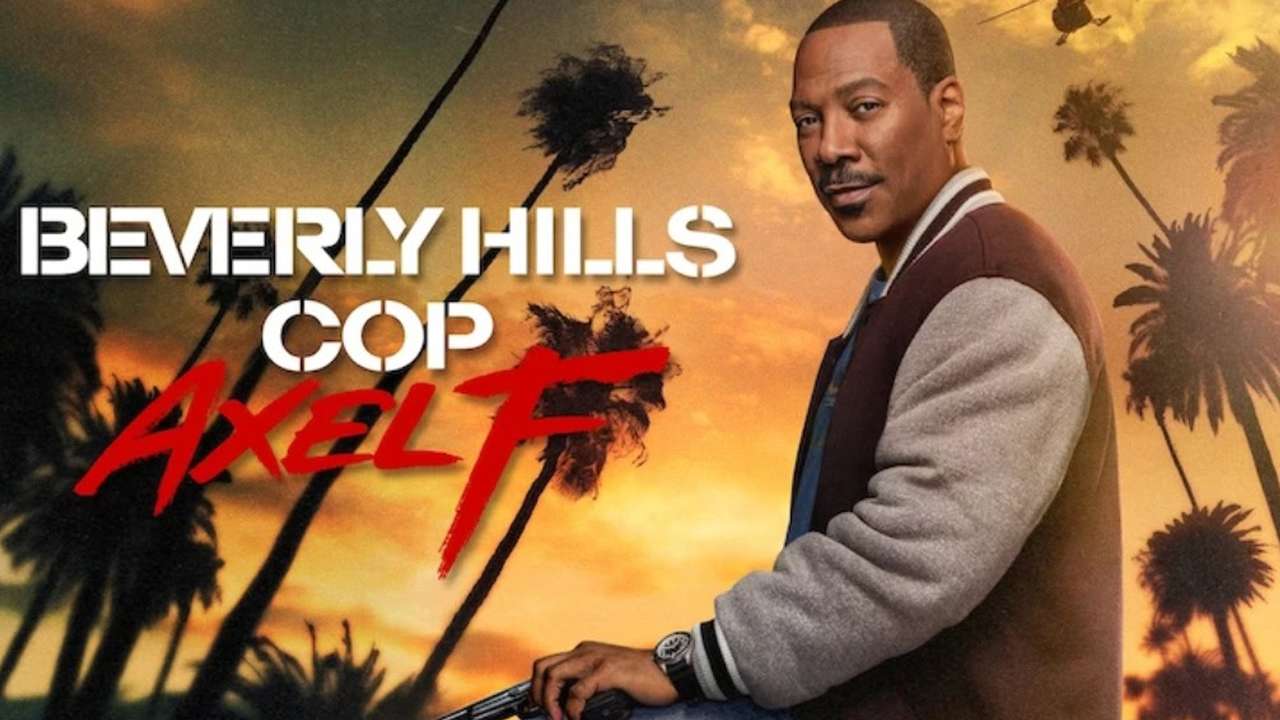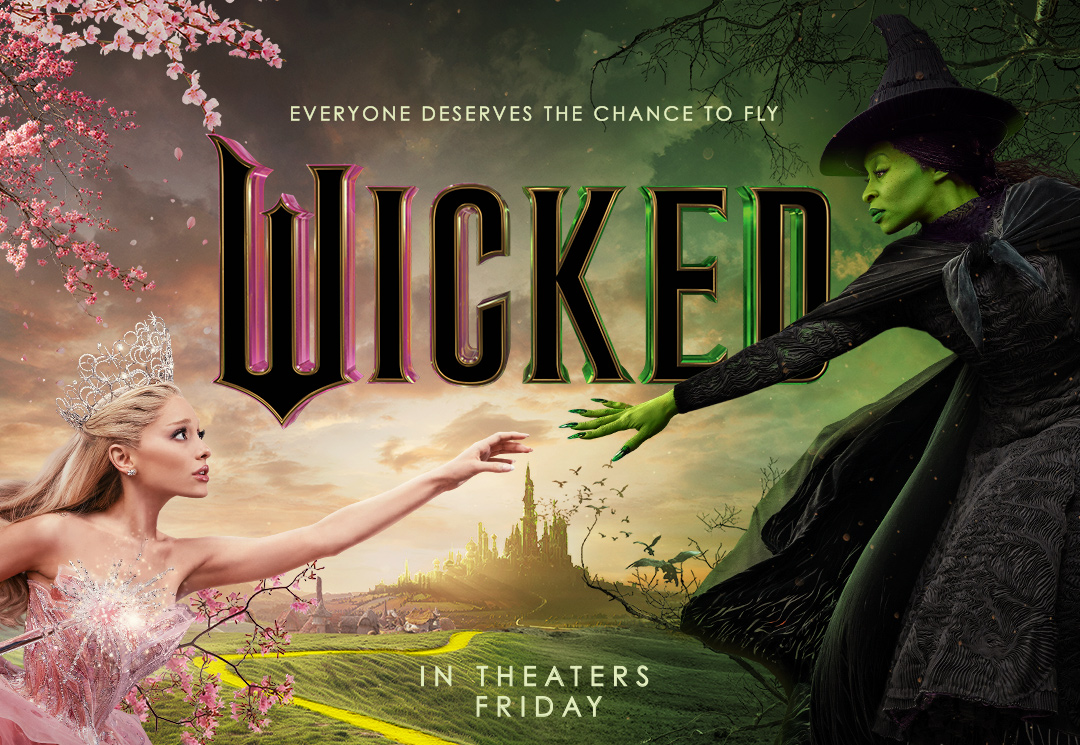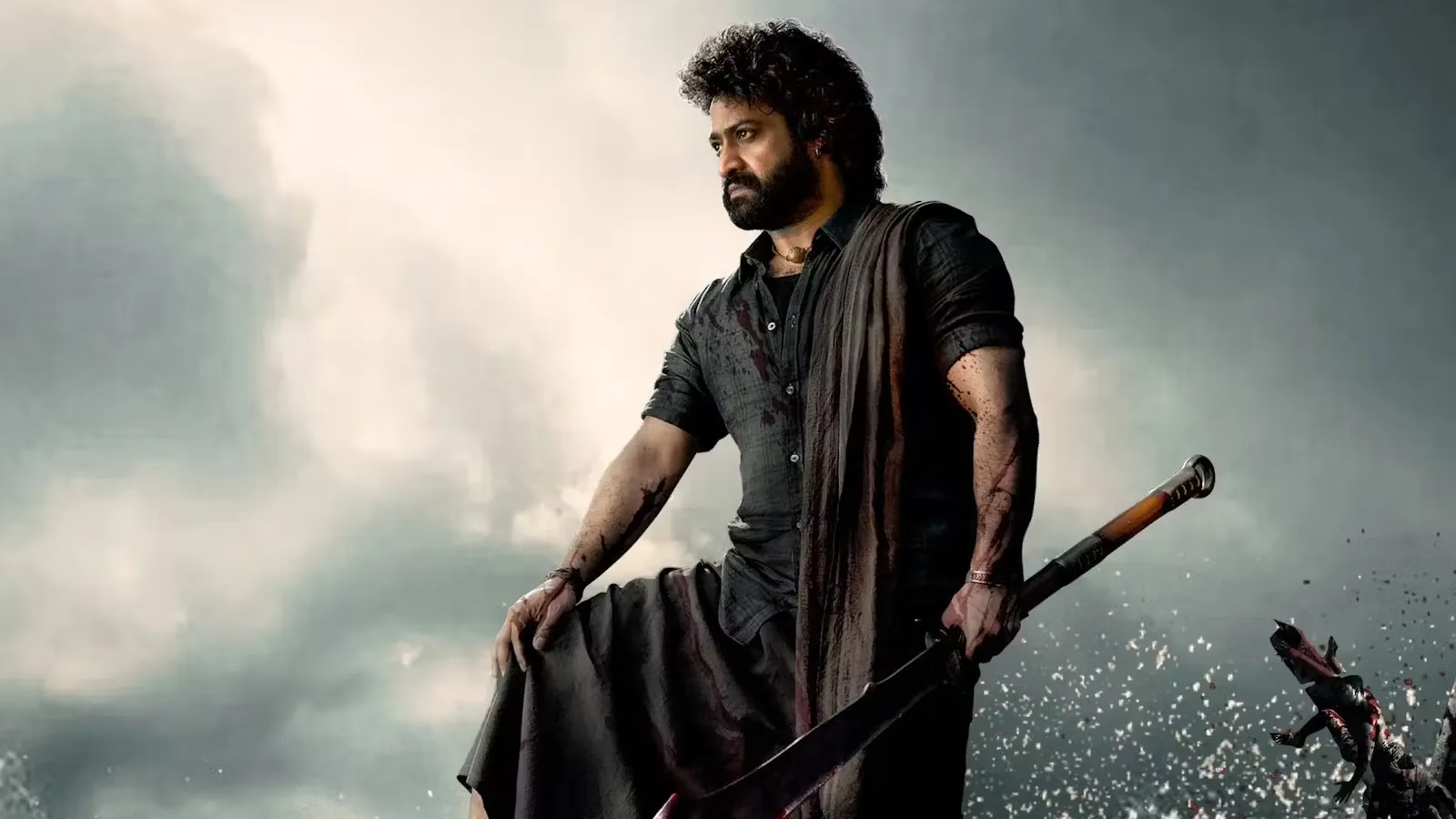TV
American Horror Story: Delicate
As most of us are already aware, the 12th Season of AHS has been fraught with all kinds of differences to the previous seasons, mainly in that this is the first one to be based entirely off a novel, ‘Delicate Condition’ by Danielle Valentine. The first half of the season aired in October 2023 to mediocre reviews, while the SAG-AFTRA strike caused production and airing delays for the latter half of the season, and the episodes of Part 2 were all cut to less than an hour long apiece. And none of that is even getting into the disjointed attempt at storytelling for Season 12, so let’s dive into this!
Meet Anna Victoria Alcott (Emma Roberts), former young ling star of Hollywood now struggling to recapture fame as an adult, who wants a baby, very very badly. Bad enough to drive herself and her husband Dex (Matt Czuchry) through multiple unsuccessful rounds of IVF (in-vitro fertilization), bad enough to keep trying no matter how crushing each failure turns out to be, bad enough to involve her purported best friend and bougie publicist Siobhan Corbyn (Kim Kardashian) in her struggles, and maybe, just maybe, bad enough to give up on a burgeoning resurgence of her career after interest in her comeback role for The Auteur begins garnering her Oscar-worthy attention.
So, Anna and Dex are going to go through yet another round of IVF, likely one of their last attempts at it, from a different doctor, Dr. Andrew Hill (Denis O’Hare), and clinic based on Siobhan’s recommendation. And already, strange things are beginning to happen to Anna – her appointments that she set herself begin springing up incorrectly, a doom saying woman called Preacher (Julia White) shows up spouting warnings about trusting no one, dire warnings appear in unlikely places, and BTW, it seems as though long-suffering but good-nurtured Dex has a side-piece too. It doesn’t help that Dex’s new partner at his art gallery, Sonia Shawcross (Annabelle Dexter-Jones), bears a striking resemblance to his dead ex-wife Adeline, either. Those spiked emerald heels start appearing weirdly too, and it seems as though no one will listen to Anna as she grows more and more suspicious that some sort of sinister cult has designs on her as-yet-unborn baby. At the same time, Anna tries to live the life of a successful returning actress, attending parties and gallery openings while draping her rapidly-expanding middle in shimmering fabrics and actively ‘campaigning’ for that little golden statue that most actors covet. Competition is fierce, even among her co-stars of The Auteur, and while Anna wants to be supportive of her fellow entertainers, she clearly appears to be incapable of doing both at the same time – wanting the baby and the little gold award at the same time is too much to ask, apparently.
Elsewhere, mostly in the past, various women in states of desperation formed from one situation or another are visited by sinister-looking women in prim black dresses, headgear reminiscent of – to me anyway – an odd cross betwixt birds and bunnies, my guess is an ostensive nod to fertility in general, and a general feeling of blood-bound witchery about them at critical moments of crossroad choices.
Though the second half of the season moves a good deal faster than the first, the attempts at callbacks and reminder flashes to Part 1 hit with all the impact of a dropped bag of garbage onto their friends Talia’s (Julia Canfield) borrowed bougie kitchen floor – splat, into incomprehensible silence, from all parties, both characters and audience, concerned. Even the reminders that, in Part 1 of Delicate Dex’s mother Virginia Harding (Debra Monk) did indeed have perfectly valid memories of abuse at the hands of a black cult and Dex’s own father Dex Sr. (Reed Birney), the revelation pales and peels away in the face of Dex’s true parentage.
Which brings us back around full circle kinda sorta, to the only real character worth a damn in this entire miserable season of strange feminism and aspirations of world domination through a kind of idiotic Rosemary’s Baby nightmare scenario, we should have known she’d steal the show when Kardashian was cast for it, Siobhan Corbyn, leader of the blood cult her high and mighty (old) self. Throughout the whole show her character has remained exactly the same, and it’s a wonder Anna can stare at her all stupefied while Siobhan does her villain speech at the end of the last episode. Siobhan never masked her ambition or greed, her mysterious protective vibe and even deep love for Anna, and can always be counted on to have secret plans of her own, already in motion, bitch.
The idea that Anna herself was used as a surrogate for Siobhan and her incestuous eugenicist plans, plus the sweet little demon baby she just birthed, has an ironic the-world-is-tilting-the-wrong-way kind of witchy madness to it. Sure, Anna really can have it all, the baby and the golden statue, if only she joins the patriarchy-crushing cabal of blood witches with world domination plans, got it.
I have questions, or I would have, but things are moving on and Anna is being saved by … Dex’s dead ex, Adaline the former member of the coven right okay her, she’s going to show back up and offer Anna a simple chant to Hestia her patron Goddess, and that is somehow enough to deal with Siobhan entirely – poof. And finally, after all that rigamarole, decades of planning and scheming and witchy plotting finally settled, Anna really can have it all as a White Witch of Hollywood, heaven help us, with her perfectly human baby and that damned little golden statue, clutched in an only slightly desperate grip.
As with any season of AHS there are a great deal of statements that could be implied just under the skin of the season – the canker way of ambition, the millenia-old pain of a woman giving birth, the savagery and bloodshed that comes with bringing forth life, pushback against both the patriarchy and ultra-feminism, the absolute desperation of humans wanting to have a child, and perhaps strangest and most open to interpretation of all, what it means to be feminine. The worlds population of women who can’t or don’t or simply won’t have children, for any reason or none, are relegated to servants, expendable servants at that, for this new world order that Siobhan is proposing, and that is far too close a comfort to things like outright slavery. A dictator is a dictator, no matter how great she looks in those emerald spiked heels.
It’s not the really beautiful grotesquerie that Ryan Murphy and his AHS gang are often known for, nor is it utterly terrible and should be burned at the stake. What Delicate should be, is put back together with missing and cut footage, an hour long per episode again come on folks, fleshed some more of Siobhan’s baby-stealing adventures in the past and given us an actual reason to like anything about the whiny Anna, at least the Part 2 we as longtime AHS fans deserve. Toss in some more spidery hijinks! Give us the actual origin of those weird feather bunny-ear headdresses!
American Horror Story Delicate the whole season can be seen on FX!
TV
How the TV Show ‘Buffy’ handled SA
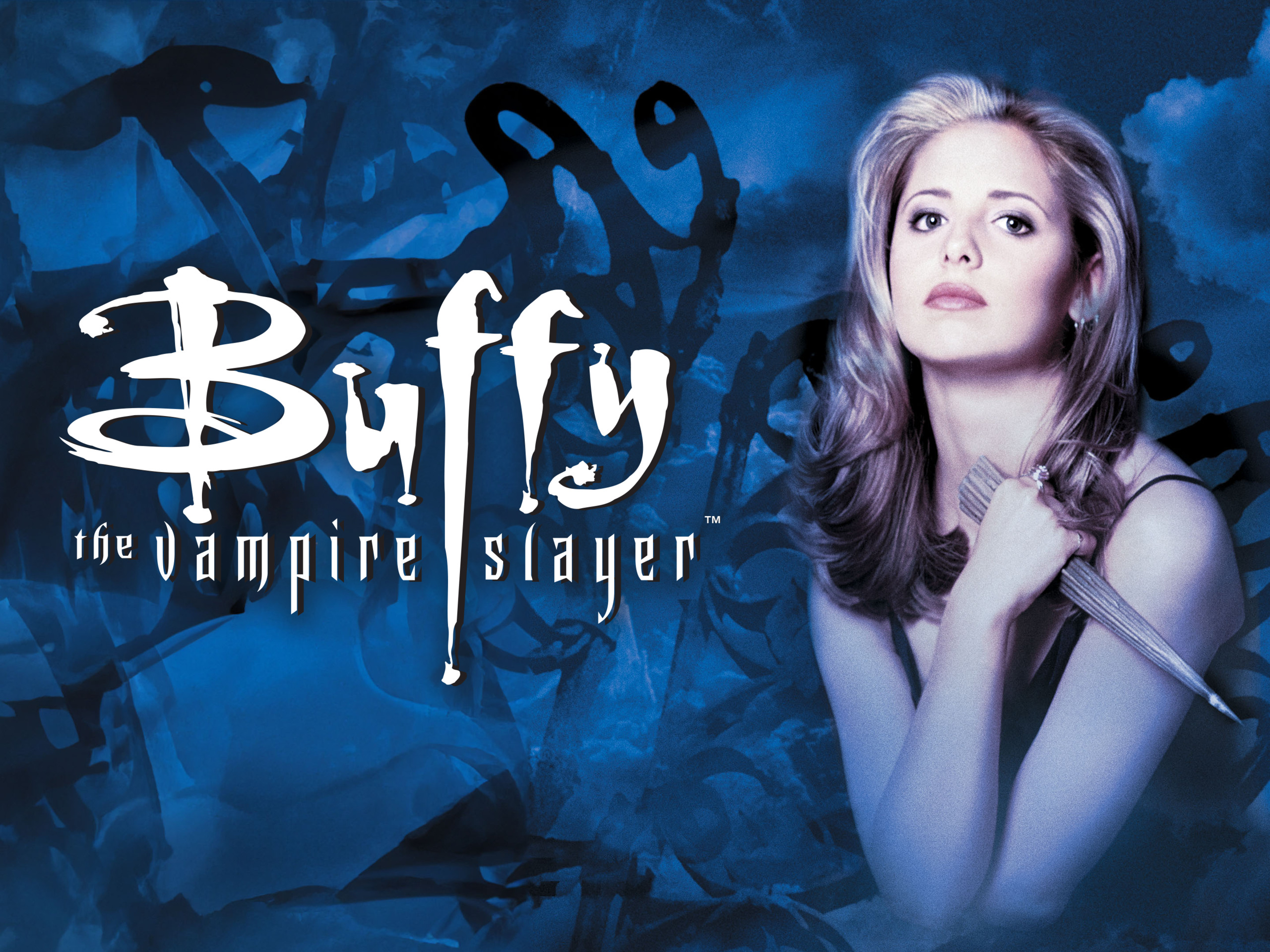
Trigger Warning: Discussions of sexual assault and rape.
In a lot of ways Buffy the Vampire Slayer was more than just a TV show…it was a feeling.
No. But it did change the way heroines were written and showed the world how awesome and self-aware supernatural comedies could be. In the mid-’90s to early ‘00s, Buffy influenced everything from fashion trends to the way we speak. The linguistic feature of speakers ending declarative sentences in an upward inflection (like everything is a question). This phenomenon, known as ‘upspeak’, became popular in the mid-90s to the horror of many a boomer.
Buffy was progressive in many ways for its time. A strong (yet at times, admirably vulnerable) relatable heroine. Buffy was cool, independent, and brimming with quippy comebacks. Buffy’s creator, Joss Whedon, may have turned out to be the bad guy but he did create an admirable main character and immerse us in her world. Buffy was one of the first primetime network shows to have a gay main character and a lesbian relationship. Lesbian-identified Willow Rosenberg ushered in a new age of sapphic style that helped generations of queer young people come out.
Throughout the show, Buffy has not one but two hot, badass vampire boyfriends. What’s not to love?
Well, as it turns out; a lot of stuff. Like many shows from that era, Buffy doesn’t always adhere to the morals and values of 2024. I am, and have pretty much always been, a Buffy obsessive (to varying degrees). Even I can admit the main cast wasn’t exactly diverse. There are of course insensitive comments and jokes that wouldn’t fly today, but what I want to focus on is the show’s treatment of sexual assault.
In Western culture, rape is seen as one of the worst that can happen to a woman, perhaps even worse than death. Throughout the series, Buffy (and her female comrades) is assaulted numerous times and threatened with rape even more.
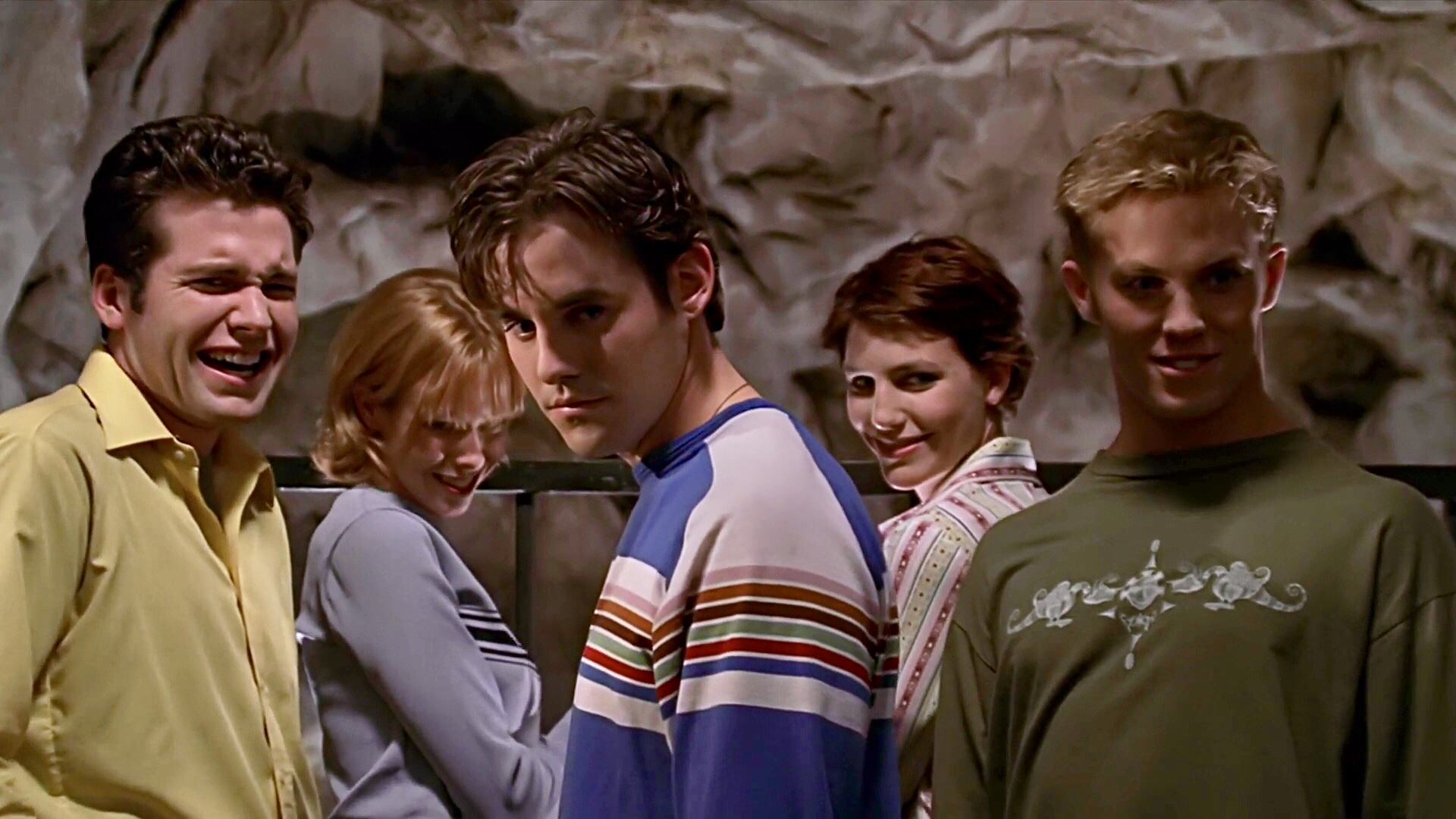
Season 1 Episode 6 – The Pack
In probably one of the weirdest plots, an early ‘monster of the week’ episode. Buffy’s closest male friend is possessed by the spirit of a hyena on a class zoo trip (it happens).
To a lot of modern fans; Xander is the archetypal ‘toxic nice guy’. Identifies as a feminist but regularly slut shames his female friends and has different rules of conduct for them than he does for himself. Regularly treats his romantic partners as less than or infantilizes them. Xander’s questionable behavior aside, this is the first episode where his true nature perhaps shines through.
Up until this point he had been attracted to Buffy. The slayer’s disinterest in anything other than friendship had caused him to act petulant and snidey in ways only a teenage boy can. As loathe as I am to compliment Nicholas Brendon (‘Xander’) the complete personality shift he embodies for possessed Xander is laudable. He’s confident, cruel, and highly sexual. Even vampiric some might say.
Possessed Xander’s newfound animalistic urges lead him to attack Buffy with a strength that matches her own supernatural strength. In an uncomfortable scene, he pins her to a vending machine and tells her: “The more I scare you…(SNIFFS)…the better you smell.”
Buffy escapes by knocking Xander unconscious and remarks to Willow that Xander “tried his hand at felony sexual assault”. It could be argued that Buffy is making light of her trauma by joking about it. However, at the end of the episode, Xander pretends he remembers nothing about his possession but then admits to Giles that he does.
Other more popular recurring characters are forgiven for their horrific behavior due to their lack of souls (being vampires). However, the show never makes clear exactly what a soul is and how it affects a person’s intrinsic goodness. It is unclear what happened to Xander’s soul during his brief possession but the instance is never brought up again.
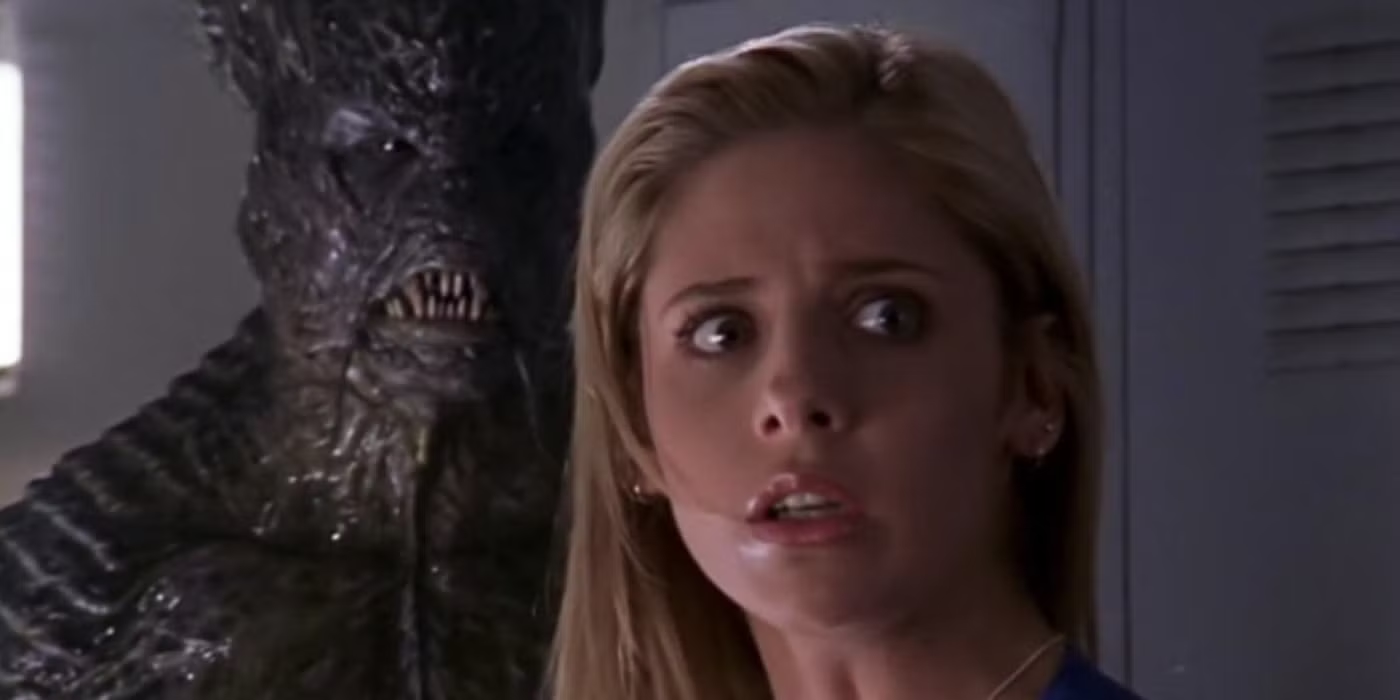
Season 2 Episode 20 – Go Fish
Yet another ‘monster of the week’ episode; the school’s swim team gets turned into sea monsters (again, it happens). Buffy goes on a date with a member of the swim team when she turns down his advances he locks his car door stopping her escape. When he tries to touch her she breaks his nose on the steering wheel. Buffy is blamed by the school for the way she dresses, almost every woman has heard that at least once!
The episode culminates with Buffy being thrown into a sewer with the monstrous swim team by the evil coach. The coach remarks that ‘his boys have already eaten “but boys have other needs”. Threatening our 17-year-old heroin with gang rape. Buffy of course jokes about her predicament and is saved in the nick of time.
It could be speculated that as Buffy is a metaphor in itself that the writers were trying to make a statement about how female victims of young male sports stars are treated.
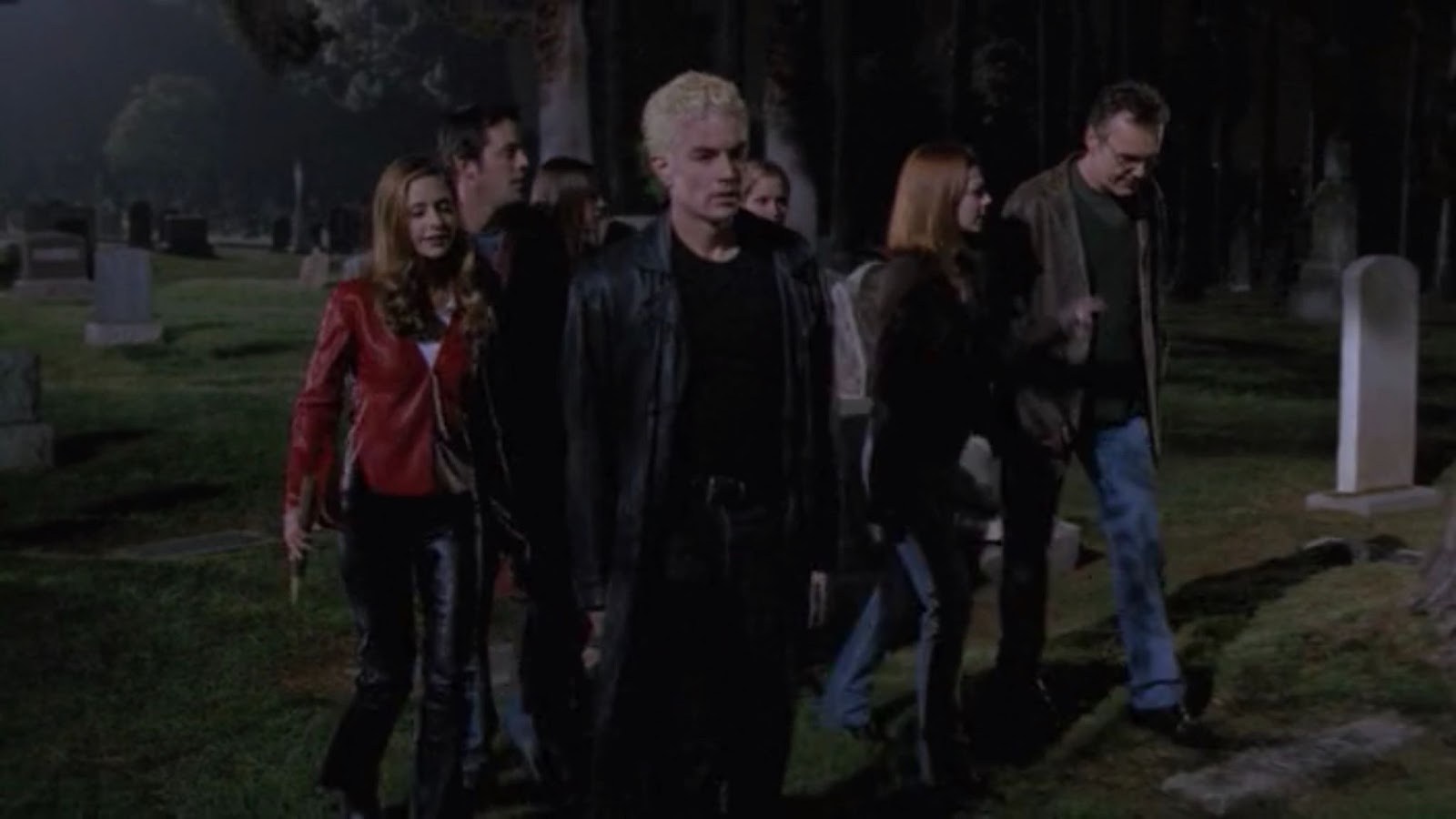
Season 6 Episode 1 & 2 – Bargaining
Season 6 is extremely controversial within the Buffy fandom. Arguably the most polarising of the seasons. Whether you love it or hate it (I love it, just putting that out there) everyone agrees it’s the darkest season. Fittingly the season opens with Buffy being brought back from the dead and digging herself out of her own grave.
A gang of heavily pierced demons is attacking the town and is torturing the Buffybot (a replacement robot for the erstwhile slayer obviously). The head demon refers to Buffybot as “nothing but a toy, a pretty toy” in a sinister and arguably sexual way before we see her being torn limb from bionic limb.
If that’s not bad enough the head demon threatens Buffy’s friends (Xander, Anya, Tara, and Willow) by saying; “we’re just gonna hold you down and enjoy ourselves for a few hours”. He also brags about his gang’s “anatomical incompatibilities that tend to tear up little girls”. The blatant and graphic threat of gang rape disturbed a lot of fans. Was this a sign of things to come with the new direction the show was going in?

Season 6 Episode 19 – Seeing Red
And here we are. We couldn’t talk about the most controversial season of Buffy without discussing its most controversial episode. Seeing Red has fan favorite Spike (vampire) attempting to rape Buffy in her own bathroom after she is injured while vampire slaying.
Throughout most of season 6 Buffy and Spike kindled a sexual relationship. Despite the writers prefacing the two as a metaphor for a toxic relationship, the couple are championed by fans to this day.
The scene itself is horrific. I can recall watching it when it was aired at the age of 12 hesitantly through my mum’s plants it was that awful. On a recent rewatch I committed myself to watching it again thinking it can’t be as bad as I remember, despite always fast-forwarding that bit on my videos (yes, I’m that old). It was as bad as I remembered.
The scene was heavily choreographed with alternating close-ups of Buffy and Spike (separately) to inspire the audience’s empathy with each character. Along with the being so brightly lit, the scene is extremely disorienting. The choice of lighting makes the actors look all too human.
Encouraging empathy for both victim and perpetrator during a rape scene is an interesting premise. Personally, I liked how multilayered and complex Buffy and Spike’s relationship was for what was billed as a teen drama. But I, like many, was traumatized by this scene. James Marsters, who played Spike, calls shooting the scene; “the darkest professional day of my life” (Marsters J, 2024) and sends him to therapy. Buffy herself, Sarah Michelle Gellar (Gellar S, 2024) is quoted as saying that she skips that particular episode while watching with her young family.
Many conspiracies were discussed after the airing of the episode. Many thought that it was creator Joss Whedon’s way of getting the audience to hate Spike. Whedon made no secret about hating Spike and had to be talked into making the series regular due to his popularity. As tempting as it is to blame Whedon, he was barely involved in the show at the time.
It is commendable that Marsters (outing myself as a fangirl here) is willing to honestly talk about how the episode affected him personally and the fanbase. Unfortunately, the show failed to properly address Buffy’s trauma. Despite showing her having PTSD-like flashbacks to the attempted rape when seeing Spike again in Season 7.
To me, Buffy has always embodied everything that is great about being a woman. She’s strong, resilient, and unapologetically feminine. Her story is one of triumph against all odds while still staying true to herself and empowering her friends along the way. As Buffy is a feminine story perhaps it is appropriate that it shows the unfortunate side of being a female presenting person. Women are assaulted regularly and usually by close friends someone they are on a date with or someone they’ve had a sexual relationship with. Many have argued that the handling of these scenes was clumsy or even irresponsible. This may be true but having someone as inspiring as Buffy Summers overcome and thrive after an assault could prove that anyone can and make victims feel less alone.
Buffy is, as always, a source of strength for many.
TV
Sweetpea
Sweetpea is a new dark comedy series created by Kristie Swain and adapted from a novel series by CJ Skuse. The series stars the ethereal goddess that is Ella Purnell (Fallout, Yellowjackets) using her actual English accent!
Purnell plays a young woman whose name is not actually Sweetpea, though she is very much a wallflower. Though even Wallflower might have too much gravitas, Rhiannon (Purnell) is treated by those around her like a weed. She is stepped on and ignored by everyone except her dad and pet chihuahua. Many have argued that Purnell is just ‘too pretty’ to be that abjectly ignored by everyone. However, Purnell is an amazing actress who plays the washed-out, doe-eyed, shrinking ‘sweetpea’ so convincingly.
Rhiannon was bullied heavily in school which led to her developing trichotillomania (a hair-pulling disorder) which ultimately caused bald patches on her scalp. She still keeps an unconvincing brunette wig in a drawer in her bedroom. Rhiannon’s dad is constantly encouraging Rhiannon to stand up for herself. Unfortunately (light spoiler!) Rhiannon’s Dad dies from his illness in the first episode, leaving her alone in the world.
Rhiannon returns home to the large empty house she once shared with her dad. After yet another tragic incident Rhiannon looks at her life, her thirst for revenge is obvious. Particularly against her main school bully Julia Blenkingsopp (Nicôle Lecky).
Rhiannon sees Julia as having a perfect life and didn’t peak in high school “like bullies are supposed to do!”. When Rhiannon returned to work as an admin assistant for a local paper, not only did none of her colleagues notice her absence but they didn’t acknowledge her return. The only person who appears to talk to her is her boss Norman played by Jeremy Swift (Ted Lasso) who condescendingly calls her “sweetpea” and demands tea.
Rhiannon’s mental state declines enough for her to finally confront Julia in a club. Julia and her friends laugh at Rhiannon which brings memories of school back and anxiously tugging at her hair. This leads Rhiannon to commit a horrifying yet liberating crime when leaving the club leading to a whole new way of expressing herself.
What I Liked:
I enjoyed watching Rhiannon’s confidence grow throughout the series. Purnell herself spoke about the production of subtlety added makeup to subconsciously influence the change in her. Rhiannon transformed from a shrinking girl to a hip-swaying, go-getting career woman. Yet its clear there is a lot of mental turmoil within Rhiannon. Purnell (2024) jokes that she actually “got kinda jacked” due to the tension she held in her body whilst suppressing Rhiannon’s rage. Purnell also comments on how freeing it was to let it all out which Rhiannon does many times and is just as satisfying for the audience!
Initially, I found every character rather one-dimensional and stale compared to Purnell. However, as the show progresses most characters become multifaceted, particularly Julia. The narrative of the show really makes you question your own morals and sense of justice. You find yourself making excuses for Rhiannon and almost cheering her on when you really, really shouldn’t.
I also enjoyed how the show explores the victim complex. Is Rhiannon really a victim or has she taken on this mantle and lived her life accordingly? Sweetpea expertly plays with the shades of grey in the ideas of what makes someone a bully and what makes someone a victim.
Sweetpea fits in perfectly in the genre of British black comedy. Scenes like when Rhiannon is clearing out her chest freezer and then climbs in herself to see if it could potentially fit a body. The door of the freezer almost closes on her but she catches it just in time. This scene perfectly captures just what kind of character Rhiannon is.
I also liked how the character’s houses were used as metaphors for their lives. The home Rhiannon shared with her father is messy and cozy yet in desperate need of TLC and repair much like Rhiannon herself. You can tell it’s a well-loved home with a long history much like Rhiannon and her father’s relationship. In stark contrast to Julia’s fiercely stylish and minimalistic home which she shares with her fiancé. It’s sleek and modern yet ultimately empty with little sign of love.
The opening credits and music choices are also fire.
What Could Be Improved:
Like many others, I didn’t quite believe someone as beautiful as Purnell would be completely ignored by the general public. It did look at times like they were relying on drab clothing and too light foundation to make her look mousey. However, as stated, Purnell’s performance does save it.
The main ‘love triangle’ (if could even call it that) was a bit forced. Calam Lynch’s portrayal of Rhiannon’s colleague ‘AJ’ was a bit too enamored with Rhiannon with no real build-up. However, I found myself really enjoying Jon Pointing’s portrayal of ‘Craig’ and wishing his arc had been explored more.
I really wanted the show to lean more into the exploration of ‘abuser’ and the ‘abused’ and take it to a deeper level. Maybe in series 2?
All in all, I enjoyed this traverse through Sweetpea’s world. I am interested to see where they go with it in the future.
Three and a half stars.
TV
Top 5 Ash vs Evil Dead Episodes for Bruce Campbell and Horror Fans (Seasons 1-3)
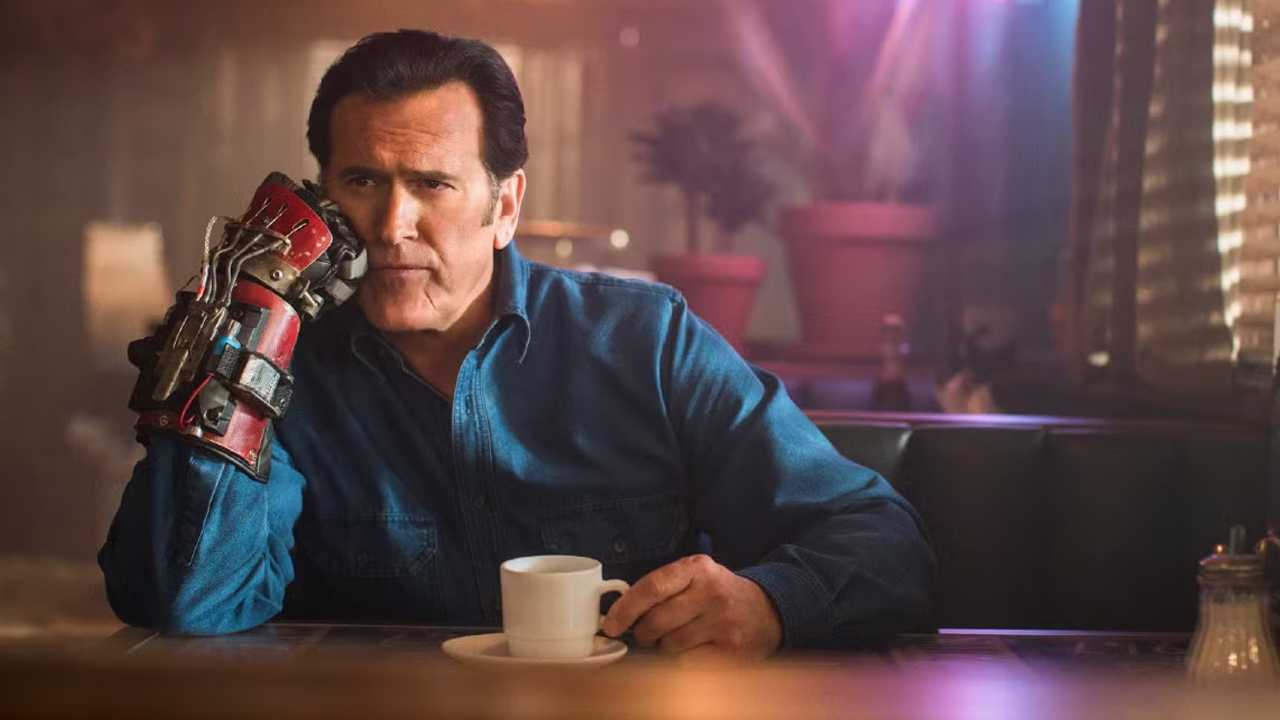
If you’re a horror fan, Bruce Campbell needs no introduction. Best known for his iconic role as Ash Williams in Sam Raimi’s Evil Dead franchise, Campbell returned to his beloved role in Ash vs Evil Dead, a bloody, gory, and hilarious continuation of the series. Running for three seasons from 2015 to 2018, Ash vs Evil Dead is a fan-favorite show that blends slapstick humor with spine-chilling horror. For Bruce Campbell fans, here are the top five episodes from all three seasons that showcase his legendary performance as the wisecracking, chainsaw-wielding anti-hero, Ash.
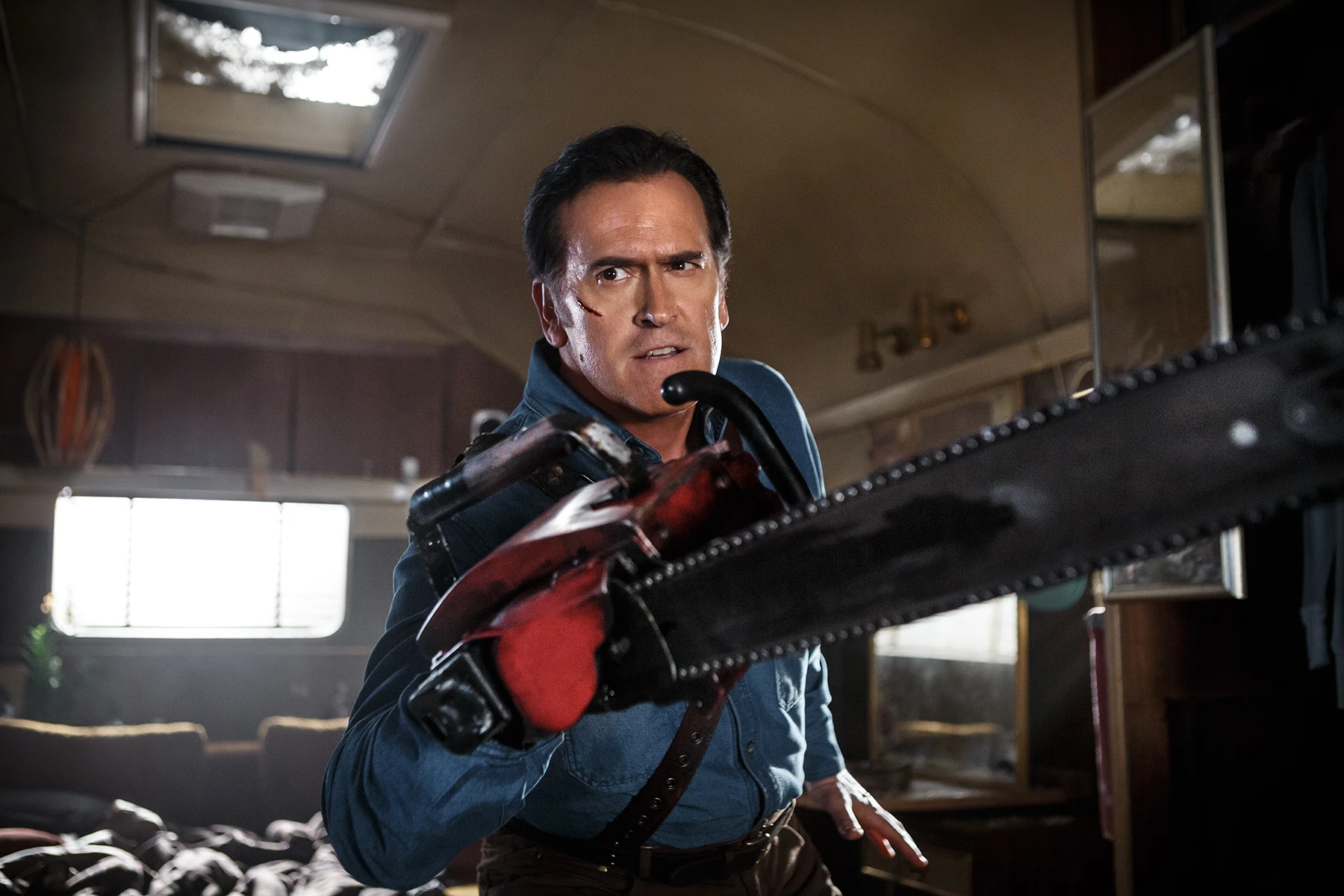
1. Season 1, Episode 1: “El Jefe”
The series premiere “El Jefe” brings Ash Williams back into the spotlight after 30 years of living a quiet life. When the Necronomicon accidentally releases the Deadites again, Ash reluctantly steps back into his role as humanity’s savior. This episode does a great job of reintroducing us to Ash’s brash, arrogant, but lovable personality, while setting the tone for the mayhem to come. Full of gore, humor, and over-the-top action, this episode is a perfect mix of nostalgia and modern horror.
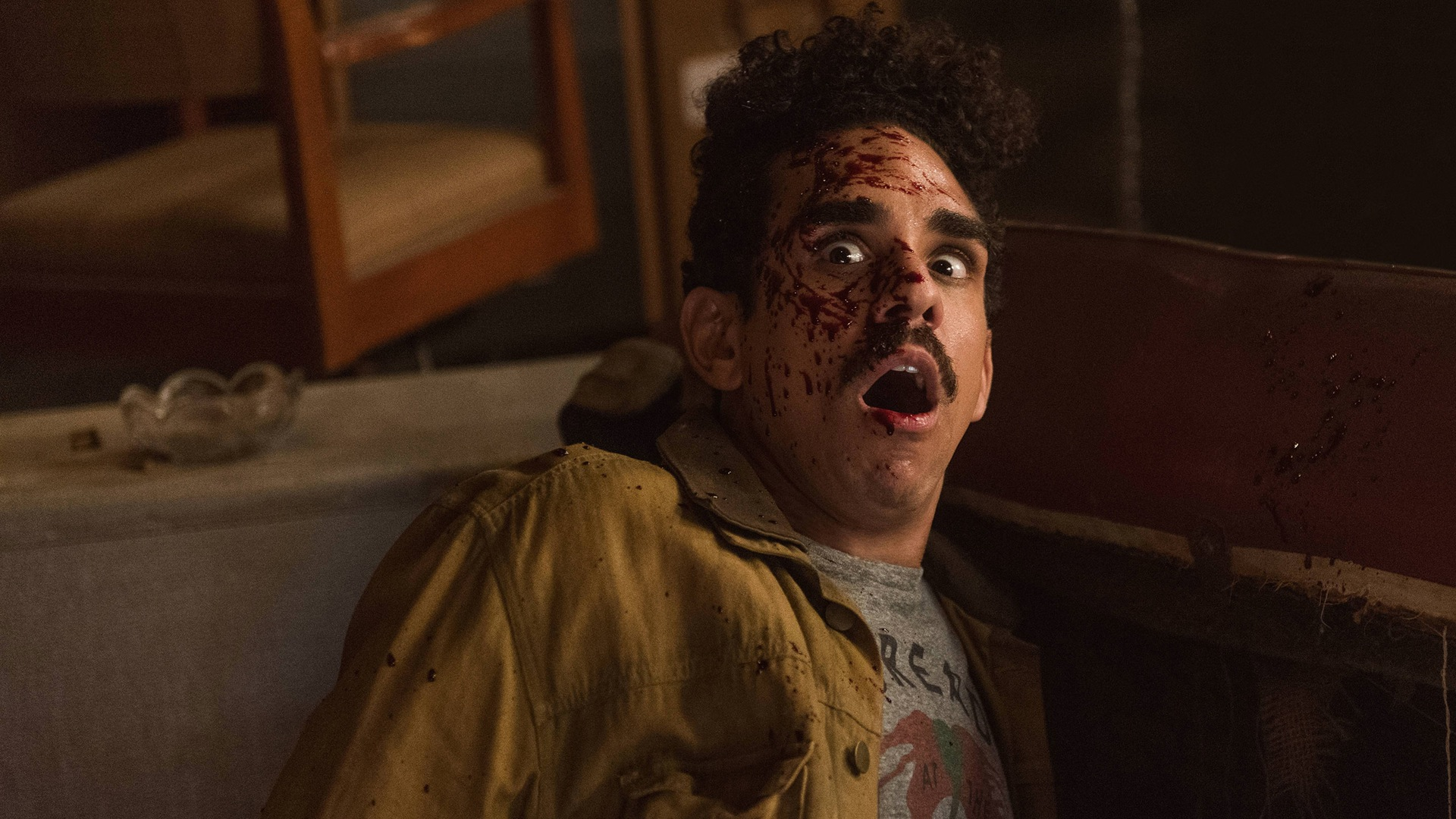
2. Season 2, Episode 2: “The Morgue”
Widely regarded as one of the best episodes in the series, “The Morgue” is a gory, gross-out extravaganza. Ash and Pablo infiltrate a morgue to retrieve the Necronomicon from a cadaver, leading to one of the most memorable scenes in horror television. Without giving too much away, Ash’s battle with a corpse in this episode is both hilarious and disgusting in a way that only Evil Dead could pull off. Campbell’s physical comedy and fearless approach to the bizarre is on full display here.
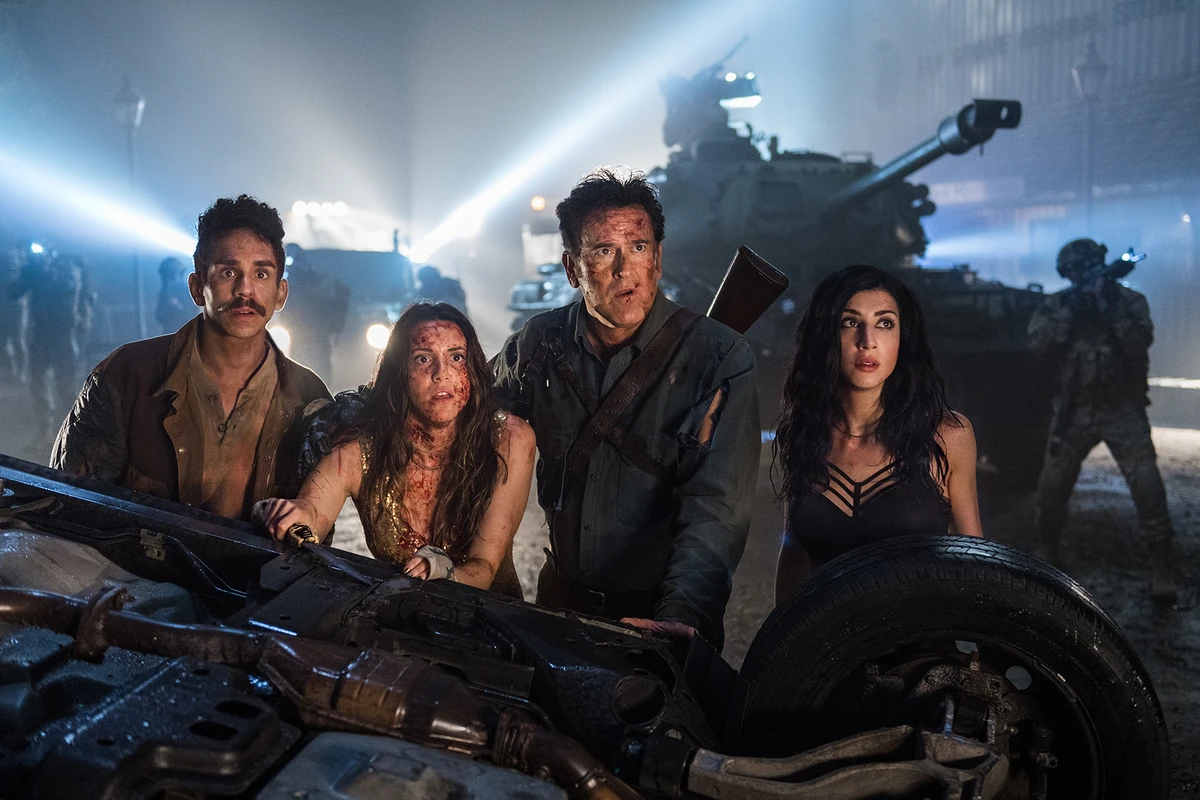
3. Season 3, Episode 10: “The Mettle of Man”
The series finale, “The Mettle of Man,” delivers on everything fans love about Ash vs Evil Dead—epic Deadite battles, blood-splattered action, and Bruce Campbell being the ultimate hero. As Ash confronts the Dark Ones and an apocalypse-level Deadite invasion, he makes the ultimate sacrifice to save humanity. This finale is bittersweet, providing plenty of epic moments for Ash while leaving fans wanting more. It’s a perfect end to a wild and thrilling series, with Campbell at his very best.
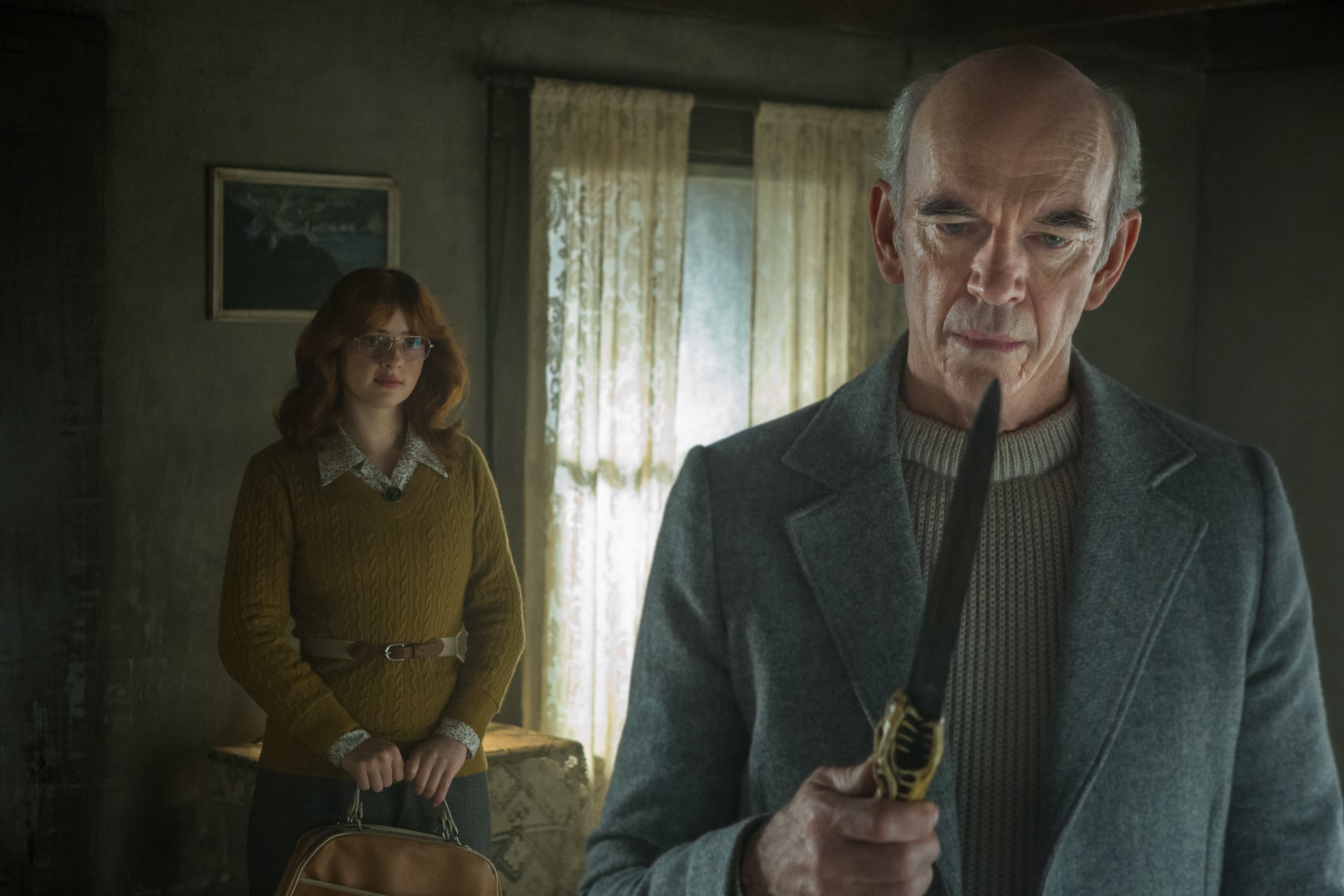
4. Season 2, Episode 9: “Home Again”
In “Home Again,” Ash is forced to confront his past by returning to the iconic cabin in the woods, where the Evil Dead saga first began. This episode is packed with nostalgia for long-time fans, bringing back all the familiar chills and thrills of the original Evil Dead films. The episode also features a strong emotional core, as Ash comes face-to-face with the memories of his friends and family who were lost to the Deadites. Bruce Campbell delivers a more layered performance in this episode, blending his usual snark with genuine pathos.
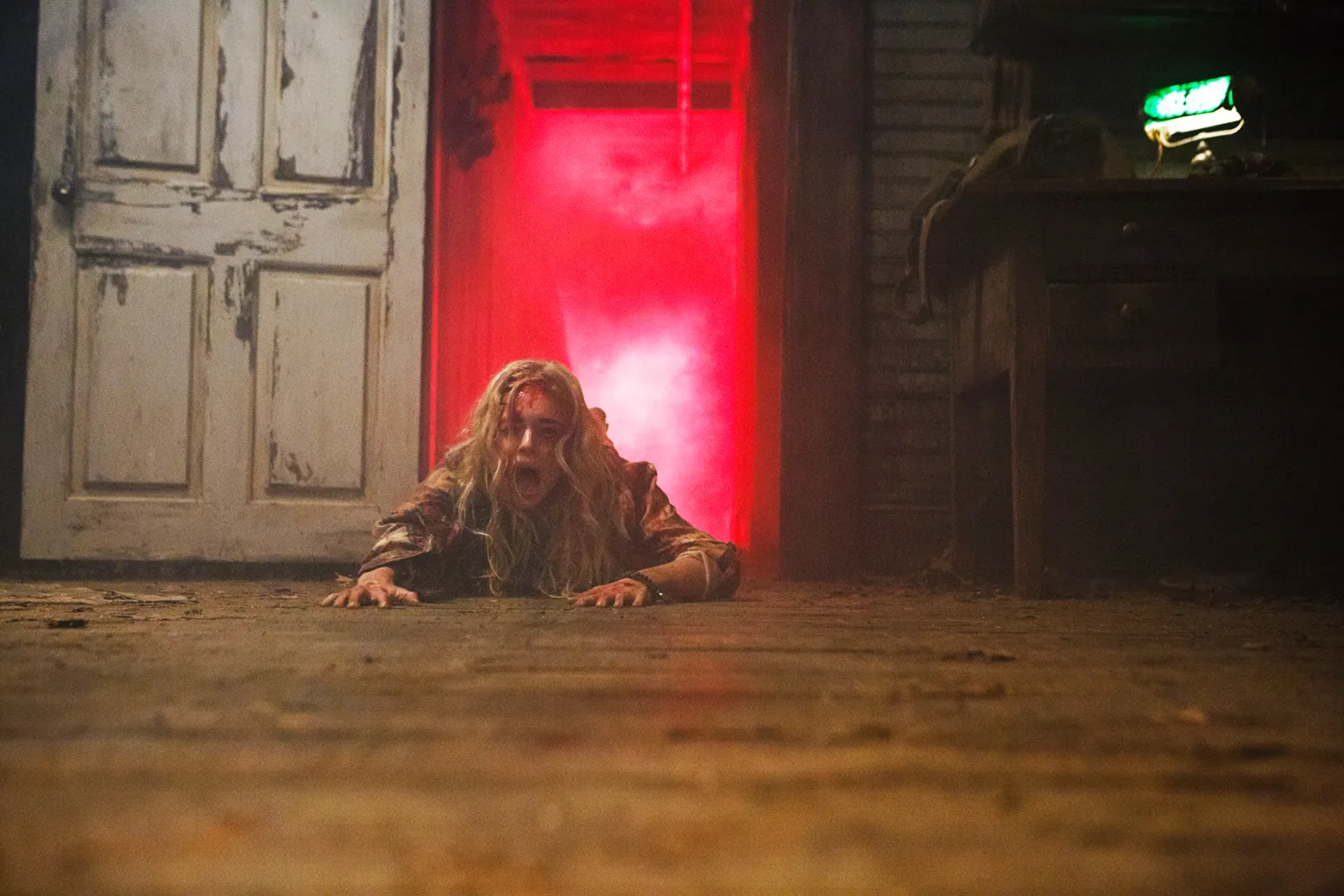
5. Season 1, Episode 8: “Ashes to Ashes”
“Ashes to Ashes” takes Ash back to the cabin for the first time in the series, where he must deal with his own demonic doppelgänger, Evil Ash. This episode plays with the classic Evil Dead themes of possession and madness, delivering a blend of psychological horror and dark comedy. The showdown between Ash and his evil twin is a series highlight, full of blood-soaked action and classic one-liners. Campbell’s dual performance as both hero and villain makes this episode a standout.
Why Horror Fans Love Ash vs Evil Dead
Bruce Campbell’s portrayal of Ash Williams is a large part of what makes Ash vs Evil Dead such a beloved show among horror fans. His ability to combine humor, physicality, and sheer badassery into one character has solidified his place as a horror icon. Whether he’s decapitating Deadites with his chainsaw or delivering snarky one-liners, Campbell’s Ash is always the highlight of any episode. His performance elevates the show from standard horror-comedy fare into a cult classic.
For fans of Bruce Campbell and the Evil Dead franchise, Ash vs Evil Dead is a must-watch series that honors the legacy of the films while pushing the boundaries of horror-comedy. These top five episodes showcase the very best of Ash’s wild, gory, and hilarious adventures. Whether you’re in it for the splatter, the laughs, or Campbell’s unbeatable charm, these episodes are essential viewing.




